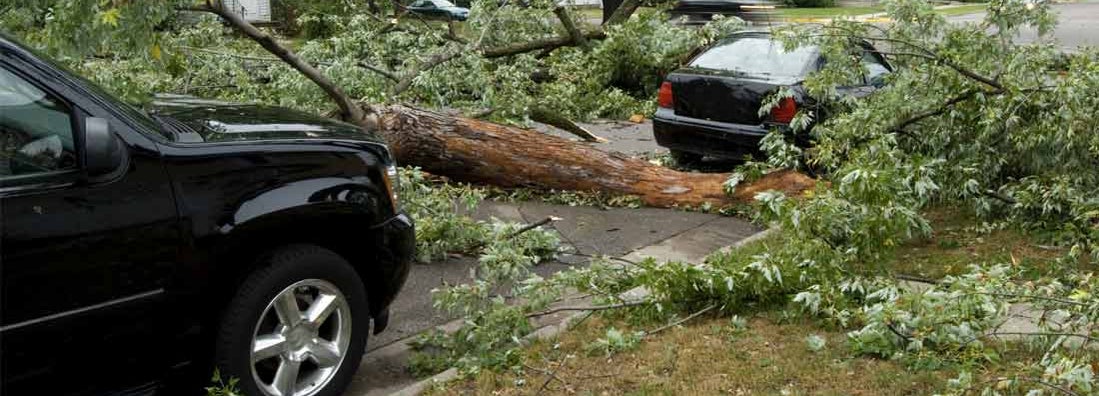5 Steps After Your Car Takes Tornado Damage
(And how you can easily find the right coverage)

Damage to a car from a tornado can range from superficial damage by hail and flying debris to complete destruction of the vehicle. No matter what the level of damage, the steps you need to take will be largely the same.
Our independent agent matching tool will find you the best insurance solution in your area. Tell us what you're looking for and we'll recommend the best agents for you. Any information you provide will only be sent to the agent you pick.
The Five Things to Do after Your Car Is Damaged by a Tornado
- Document the damage. As soon as it’s safe to do so, take photos of your car and the damage. Take many photos, do it in good lighting, and get close-ups. This will help ensure that you’re able to recover the full insurance proceeds available to you, and it will support tax write-offs for any uninsured losses.
- Contact your insurance agent. Do this as soon as possible. Yes, odds are if you’ve just been through a tornado, you’ve got a million other more important things on your mind. But this only needs to be a single phone call. Have your insurance card or policy handy when you call if at all possible.
- Collect documentation. The police or fire department that responded to the incident may be able to provide you with an incident report, but you have to request it. This report will corroborate your claim that your car was damaged by the tornado. Add this report to the photos you’ve already taken to document your claim.
- File the claim. You will need to contact the insurance company that carries your auto insurance to do this, but your agent can help. Be prepared with your policy number, the incident report number from the police or fire department, the exact details of when it happened and where, the vehicle registration information, and details of any lease or financing on the car.
- Work with the insurance company. A claims adjuster will probably need to see the vehicle, so leave it as is until they’ve had a chance to inspect it. You can remove personal items but leave everything else exactly as you found it. The adjuster will probably take more photos of their own and will want to inspect the documents you have. Record everything throughout this process. Keep copies of bids and estimates, repairs made, notes about discussions with contractors and the insurance company, and photos of damage and repairs in progress.
If the adjuster determines that the damage is more expensive to repair than the car is worth, the insurance company will probably declare your car “totaled.” That means they’re going to pay you the market value of the vehicle (minus your deductible) rather than attempting to repair it.
Keep in mind that what the insurance company offers you to settle your claim is only an offer. You can negotiate and don’t have to accept it.
This is another good reason to use an independent insurance agent. They can help you decide if the insurance company’s offer is reasonable and how to respond if you don’t think it is.
Why Choose an Independent Insurance Agent?
Our vast network of independent insurance agents can provide you with a large selection of automobile policies that will give you the security you need to deal with any calamity, including tornados.
Independent insurance agents simplify the process of shopping for and comparing auto insurance. They will explain the complex terms for you, cut through the jargon, and make sure you understand the fine print.
But perhaps most importantly, they work for you — not one insurance company. They can compare policies from many companies and pick the ones that are best for you at the best possible price.
They’ll also be there for you in the future if your needs change or questions arise. They work for you, and their only job is keeping you satisfied now and in the future.
https://www.cdc.gov/disasters/tornadoes/after.html
https://www.ready.gov/tornadoes
https://www.fema.gov/media-library-data/1522342356541-54bd8d92d0d0d07bca4c1250ebde2b21/Tornadoes_508.pdf
